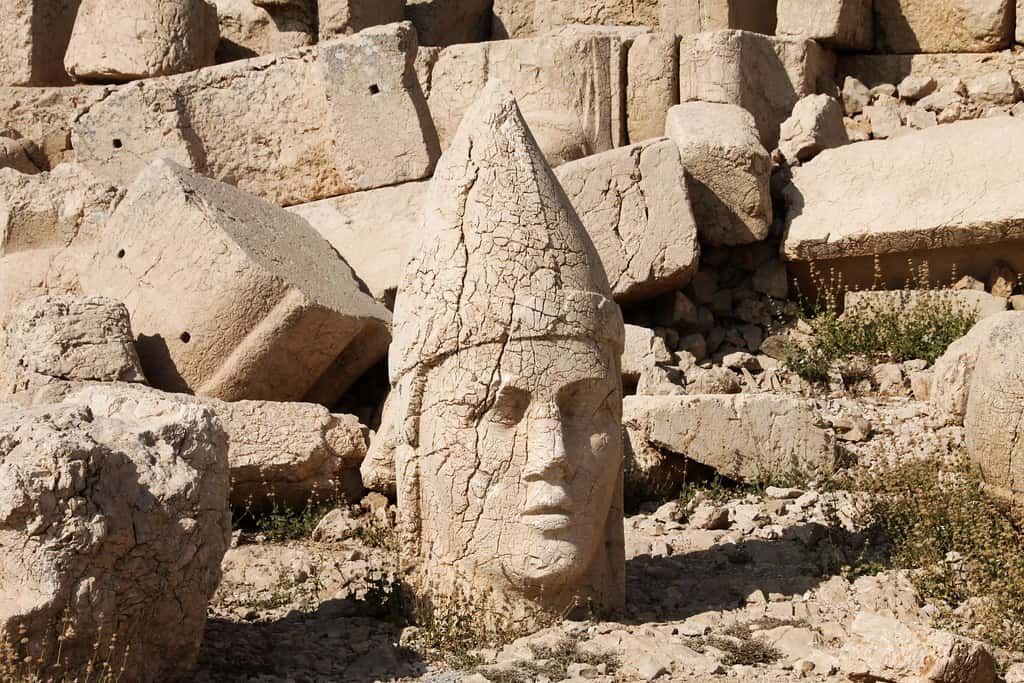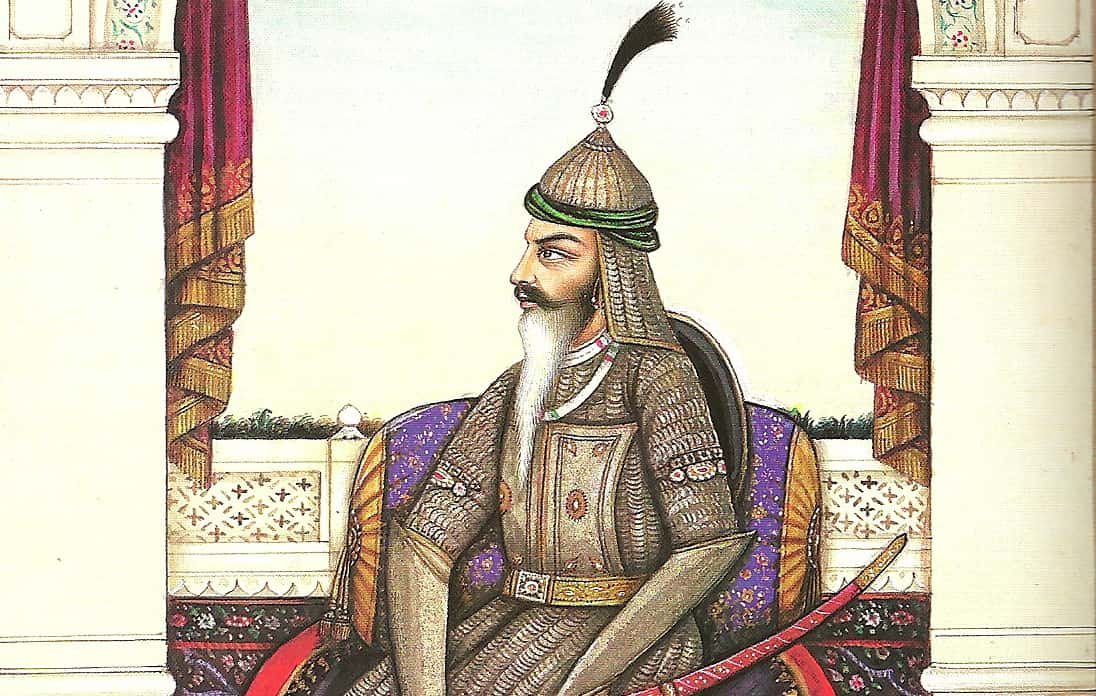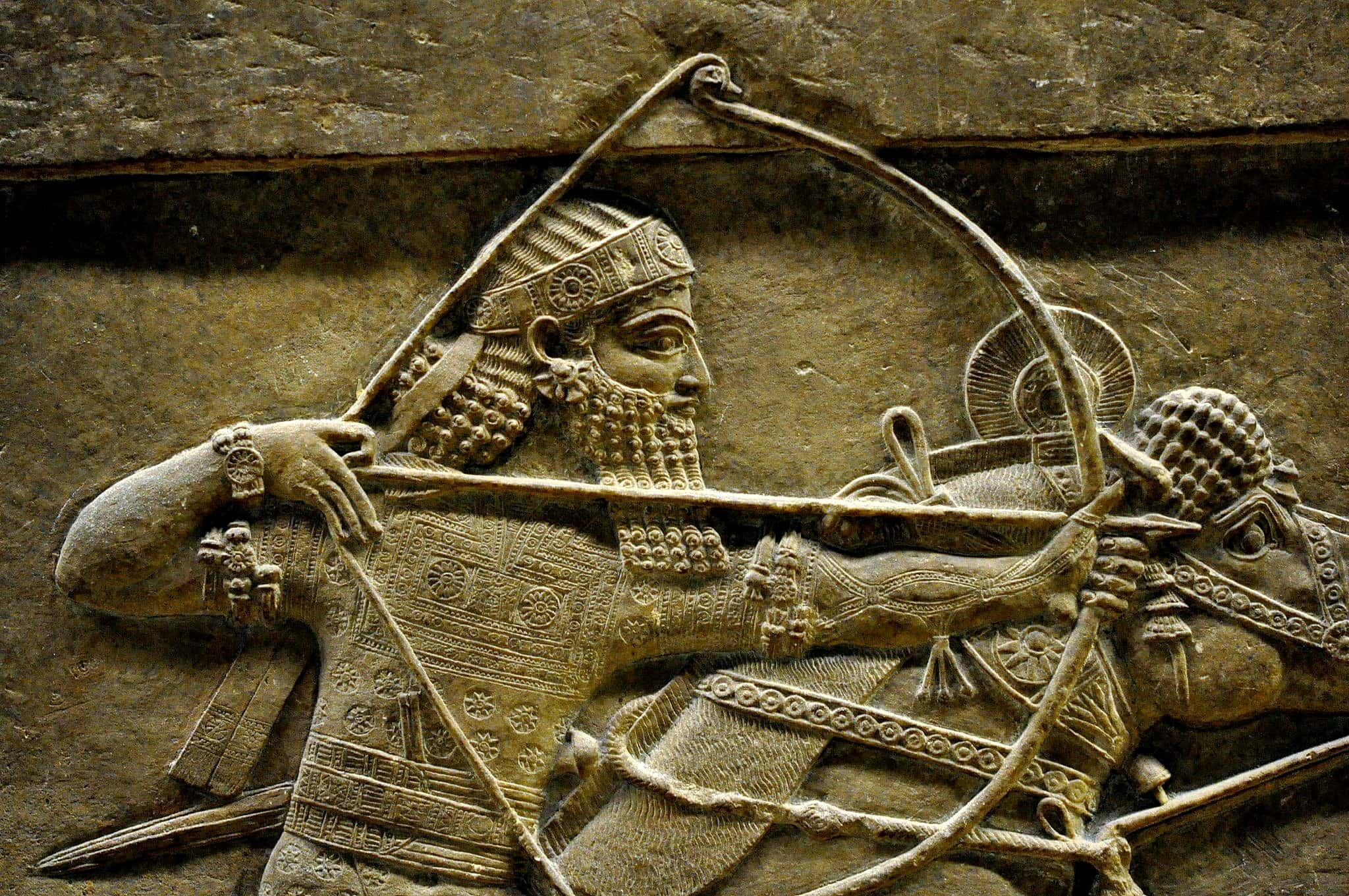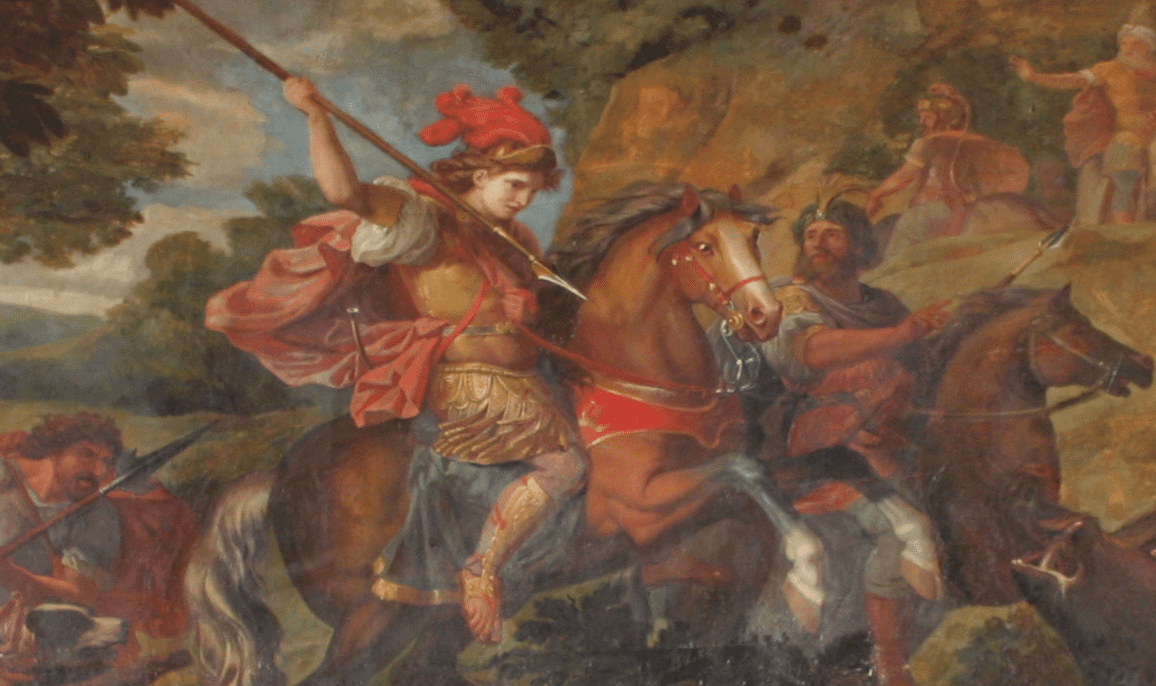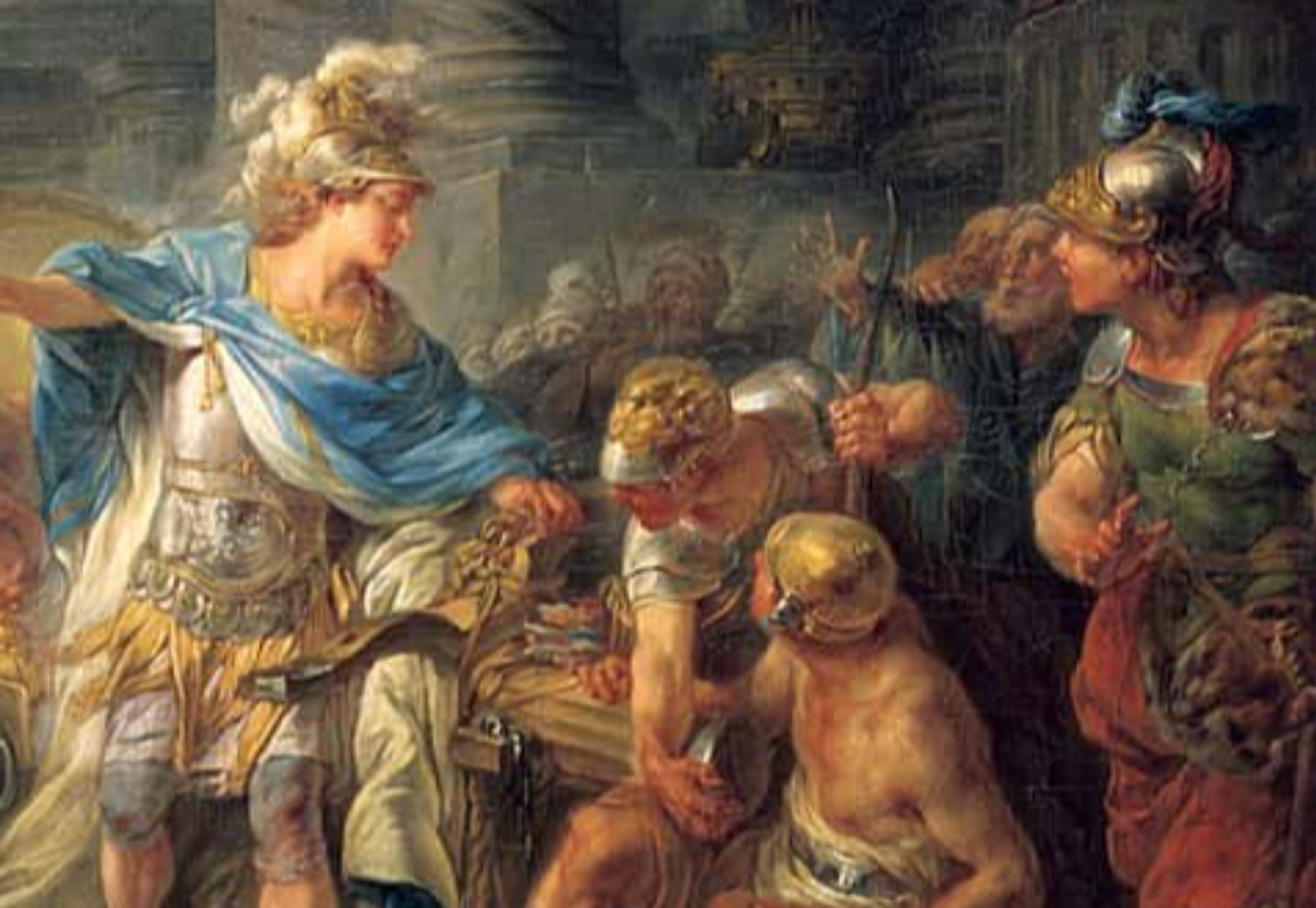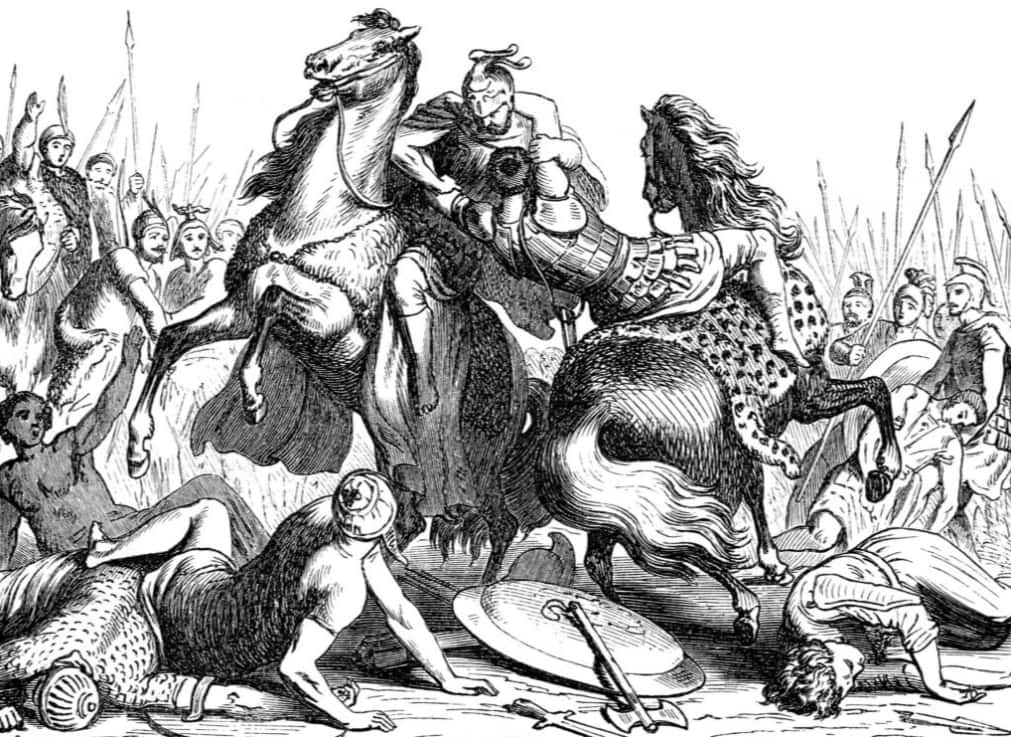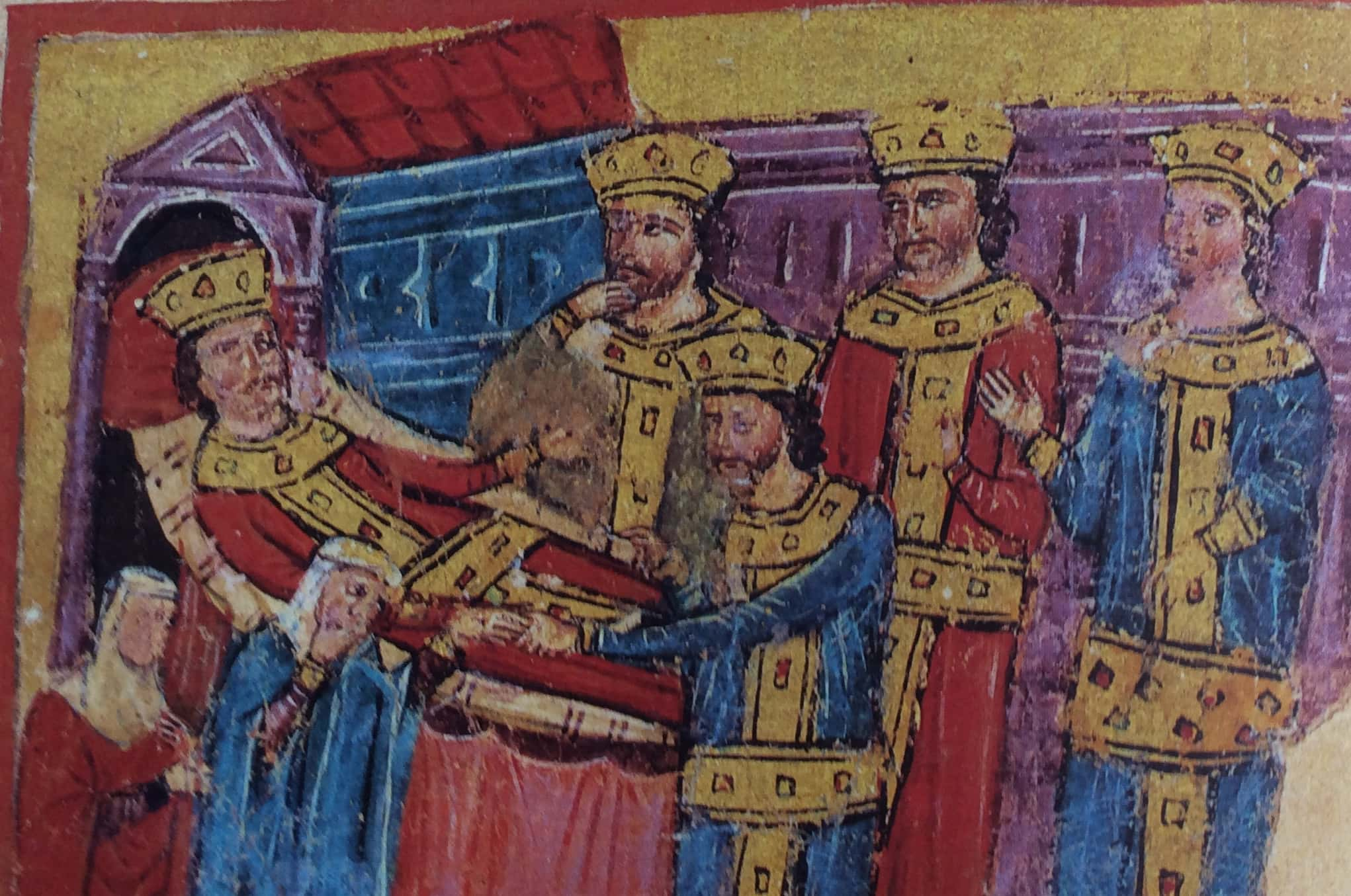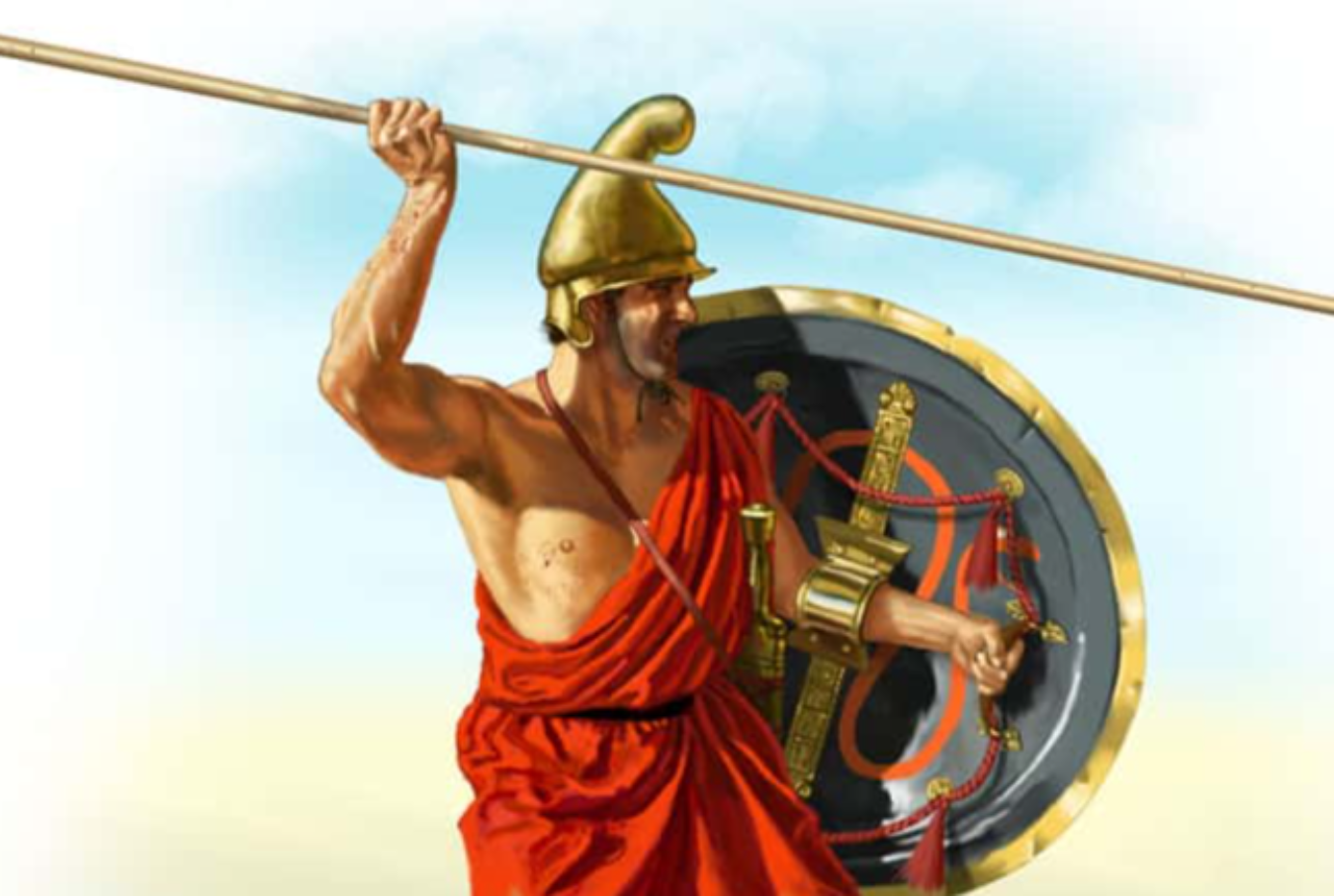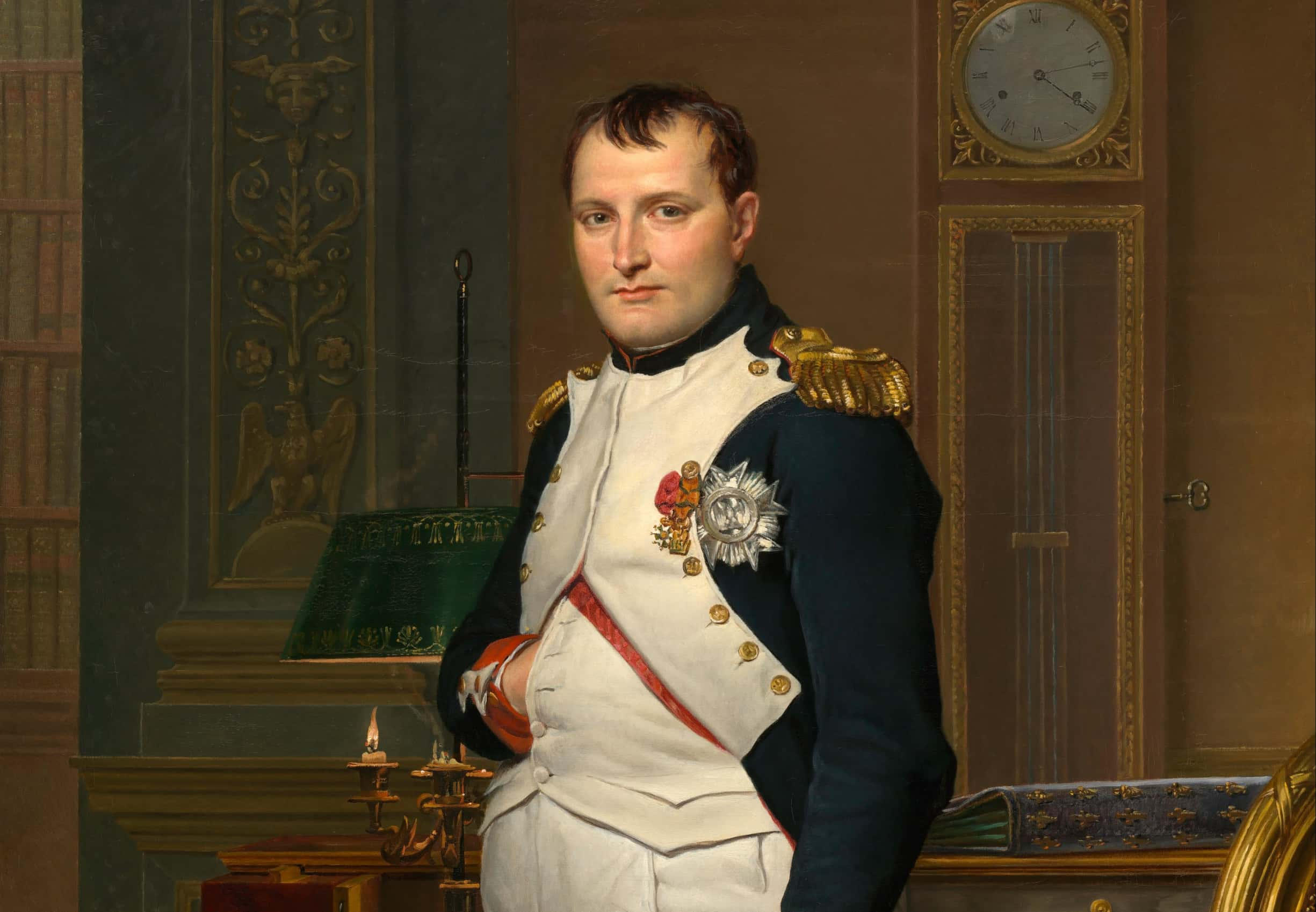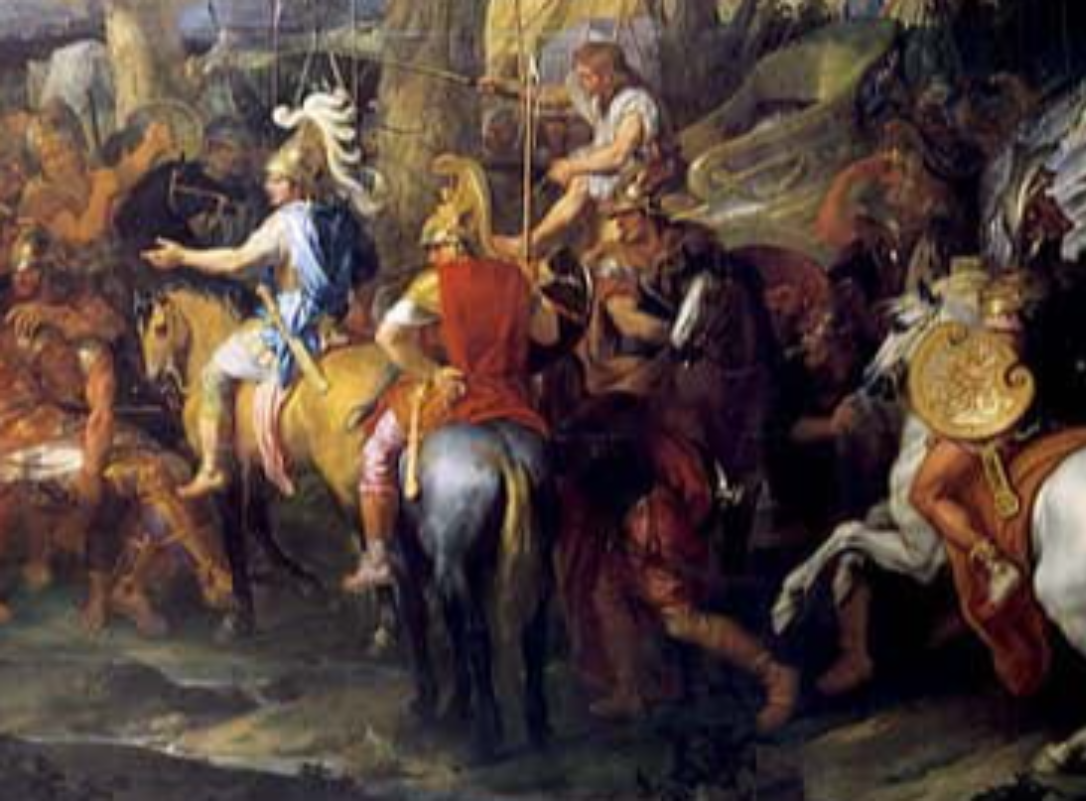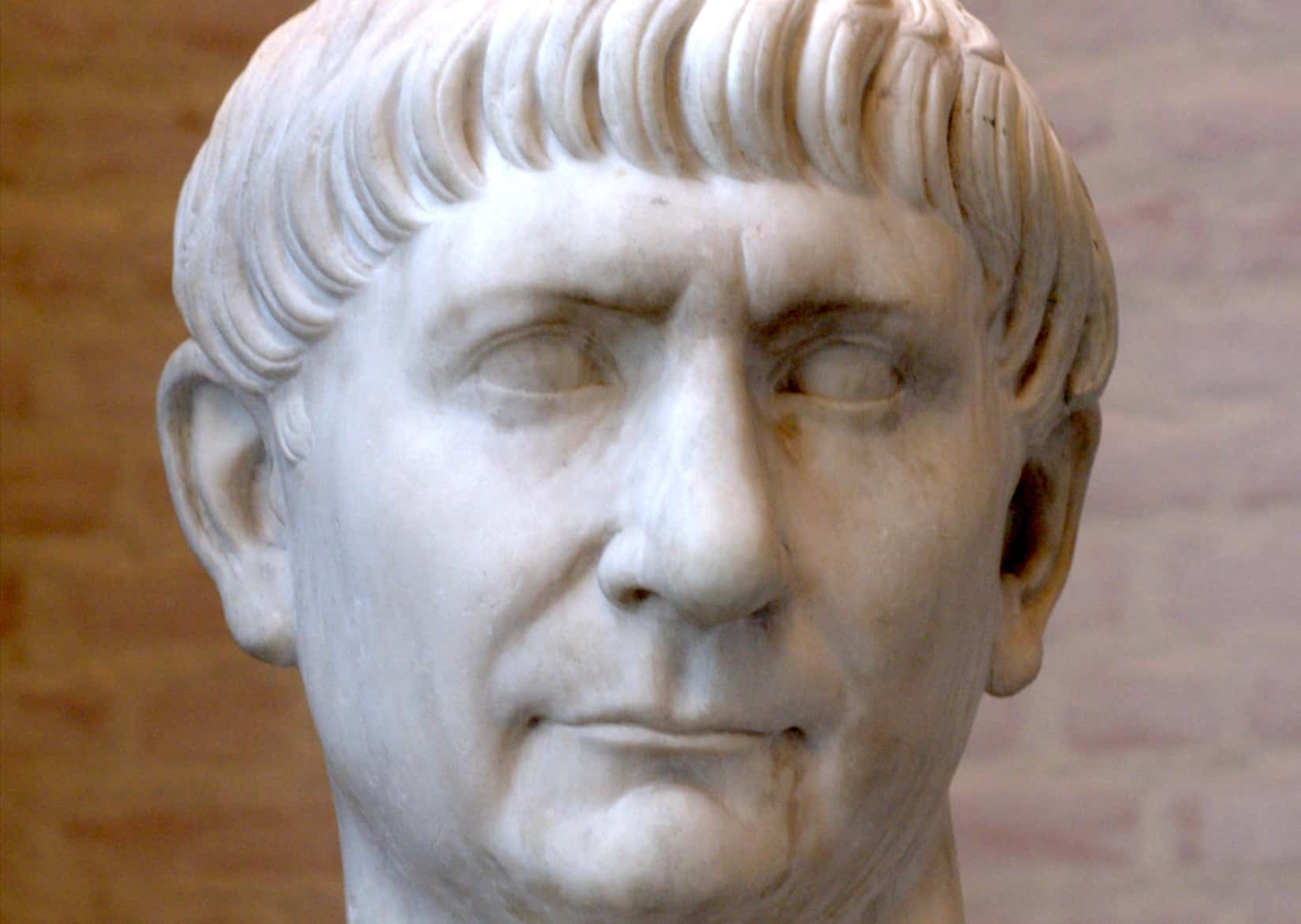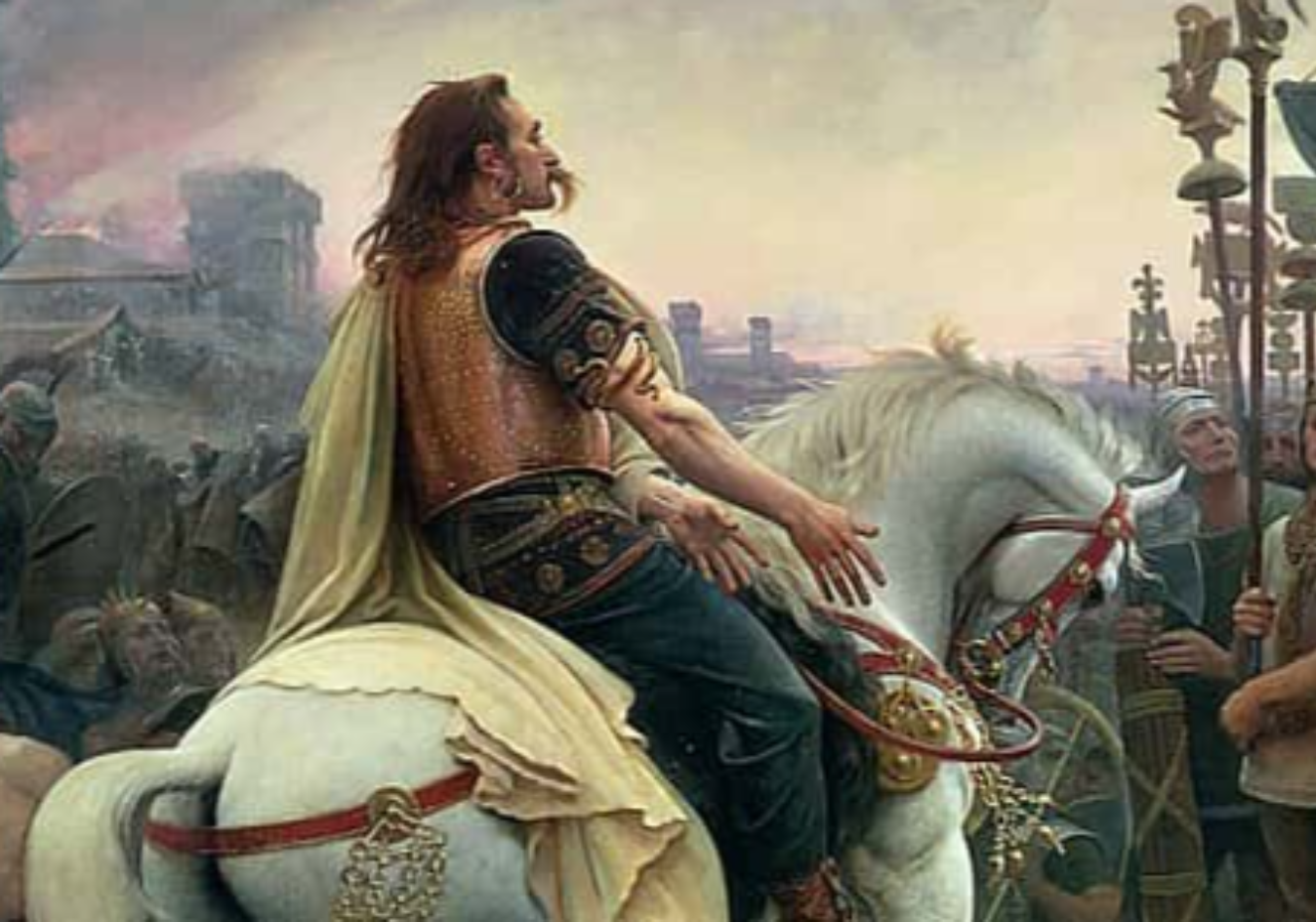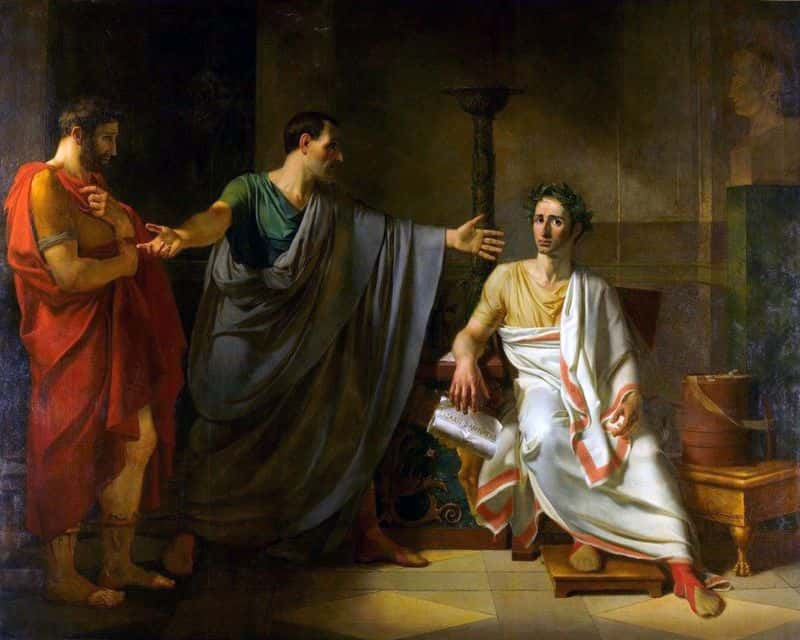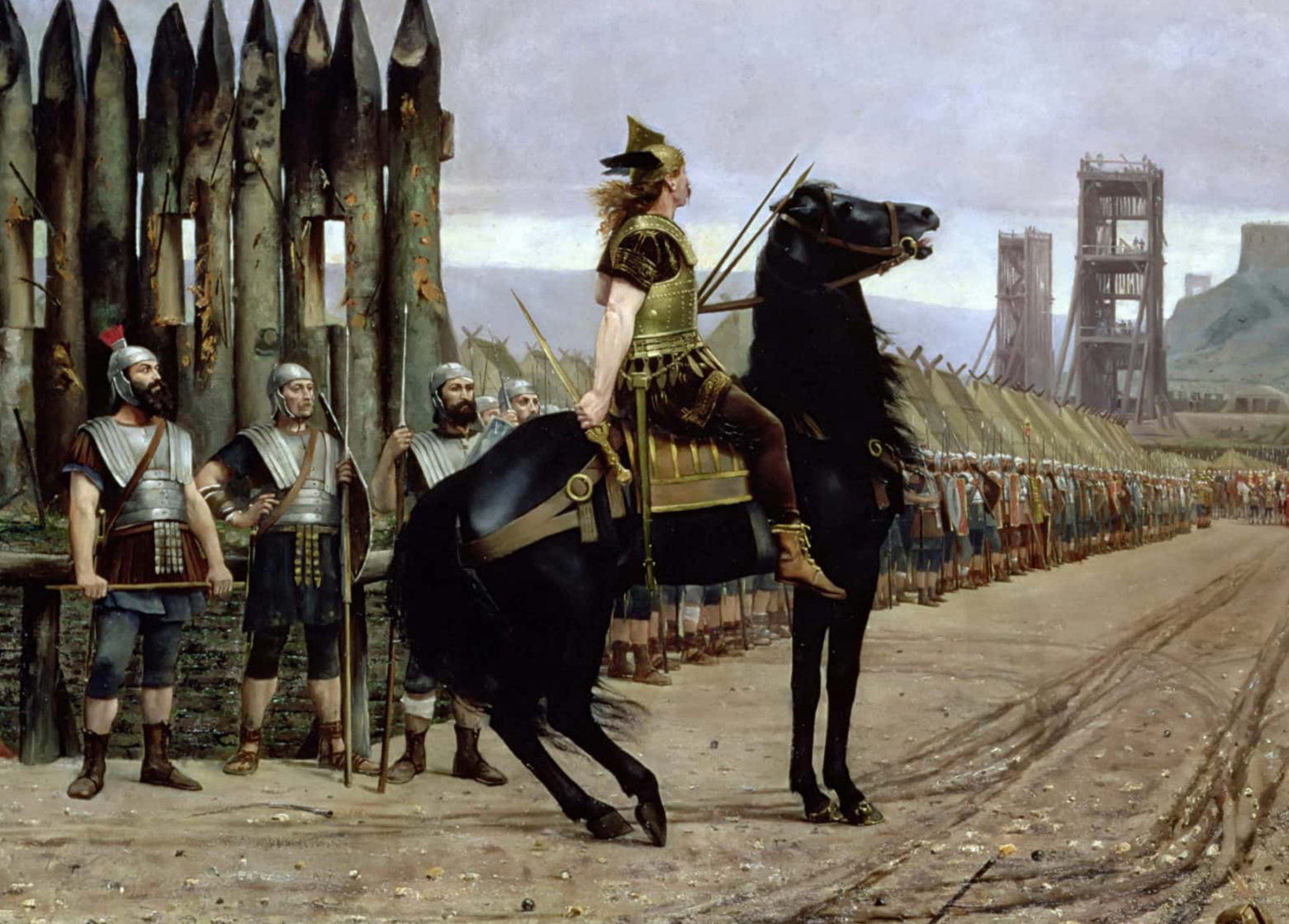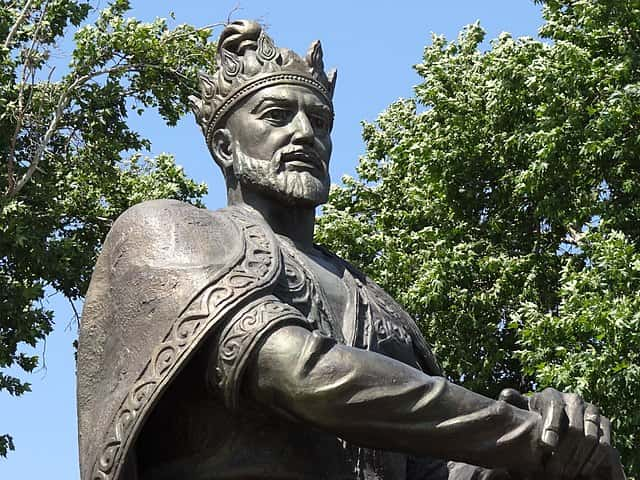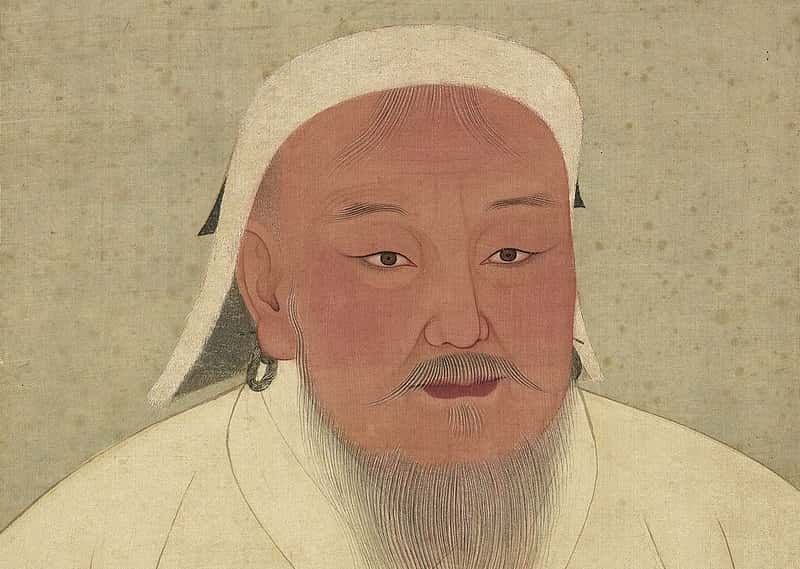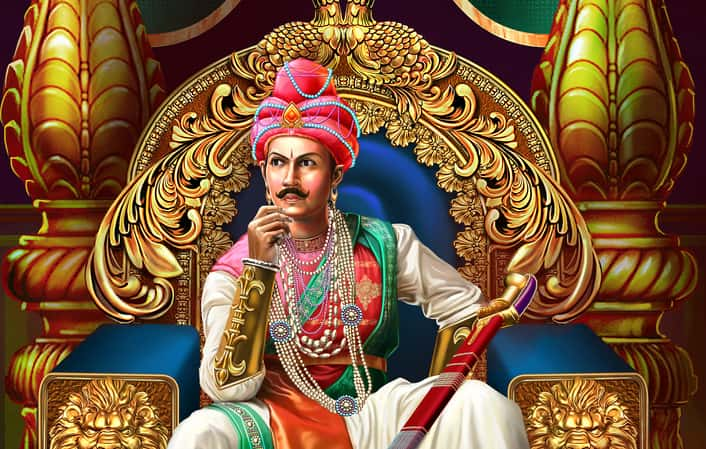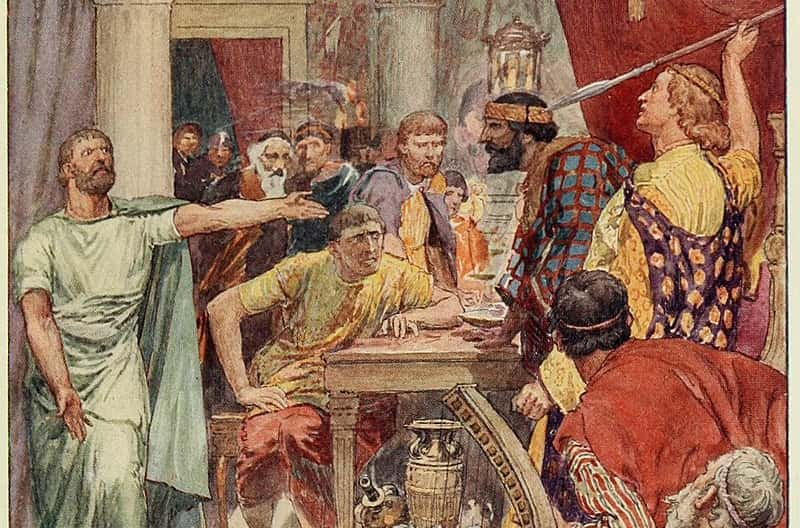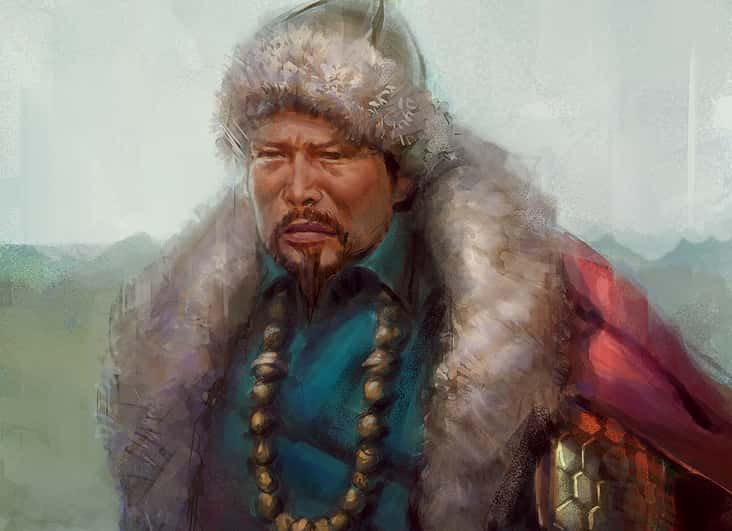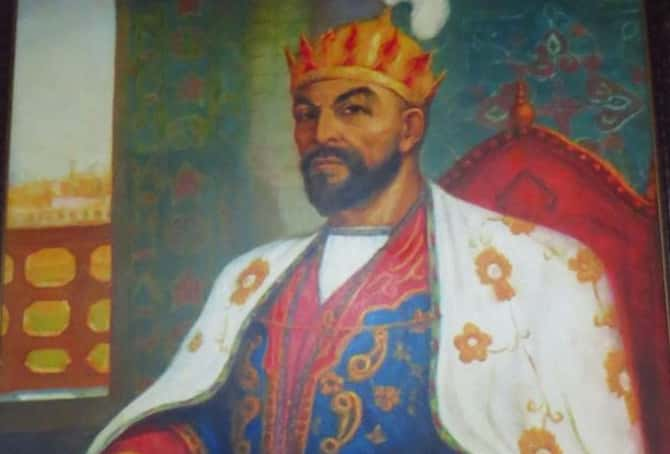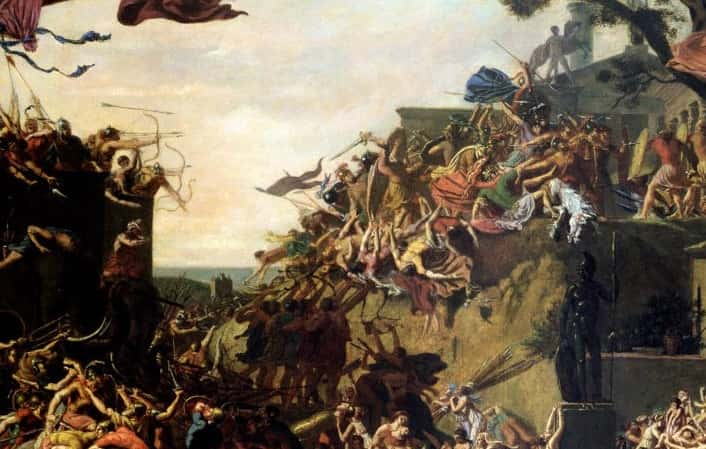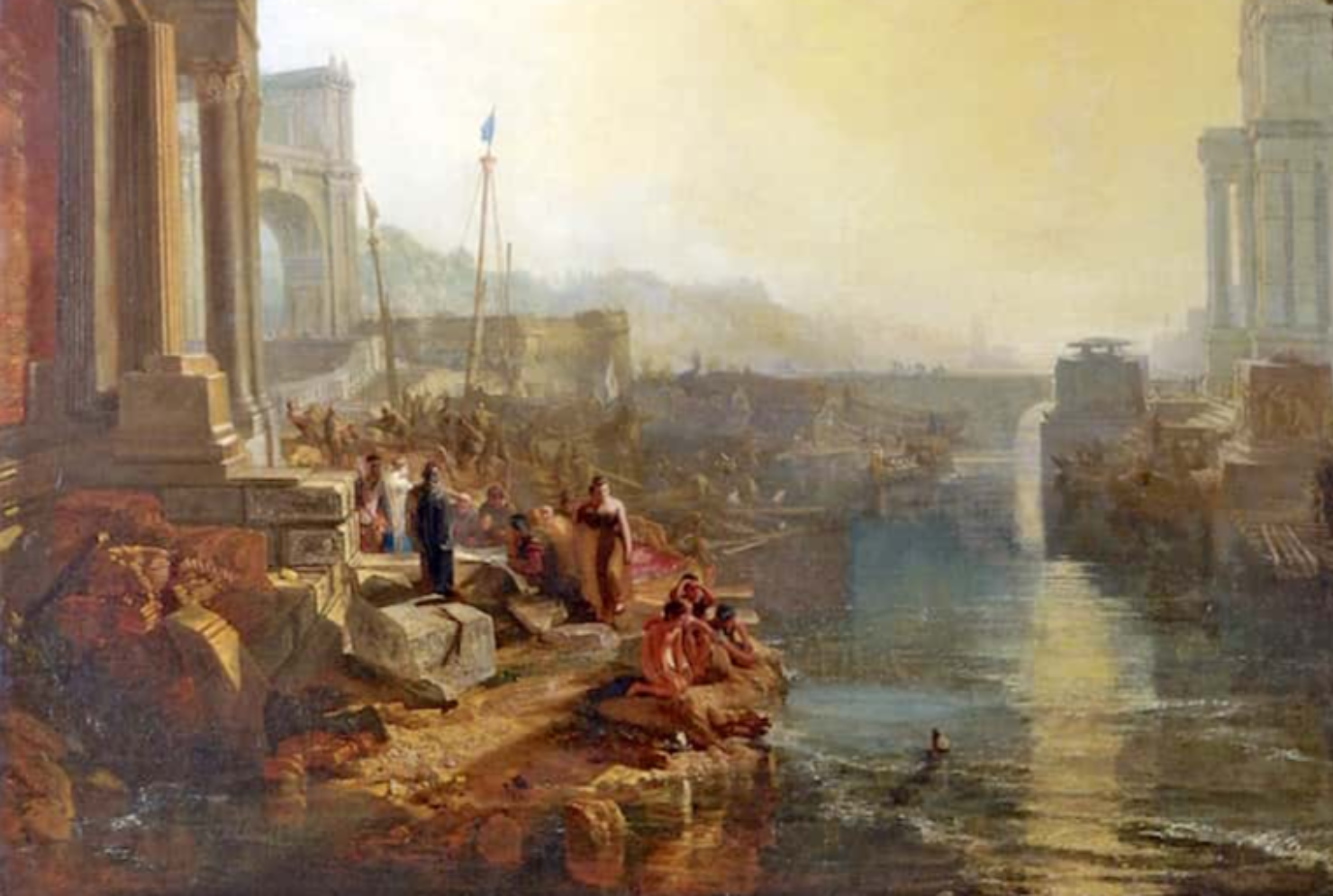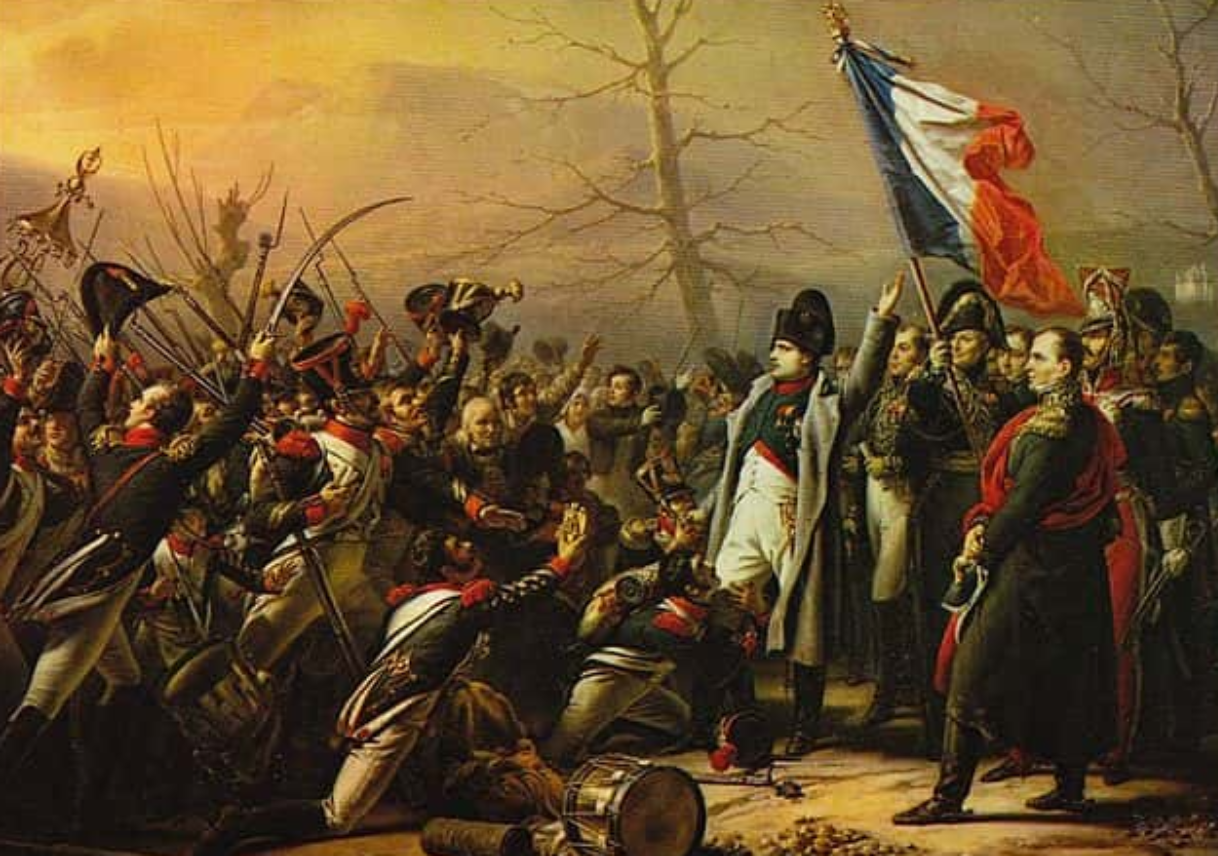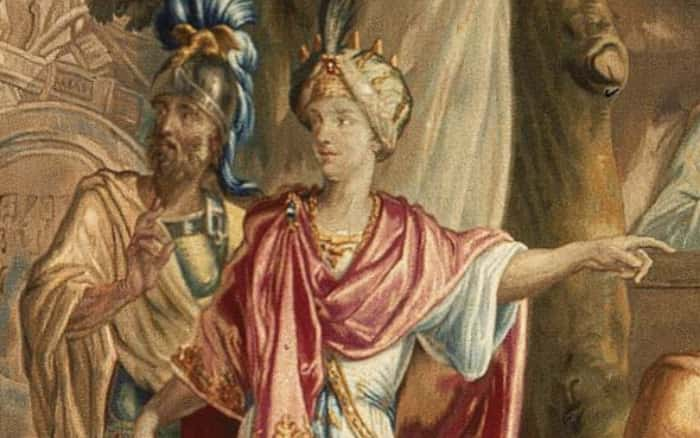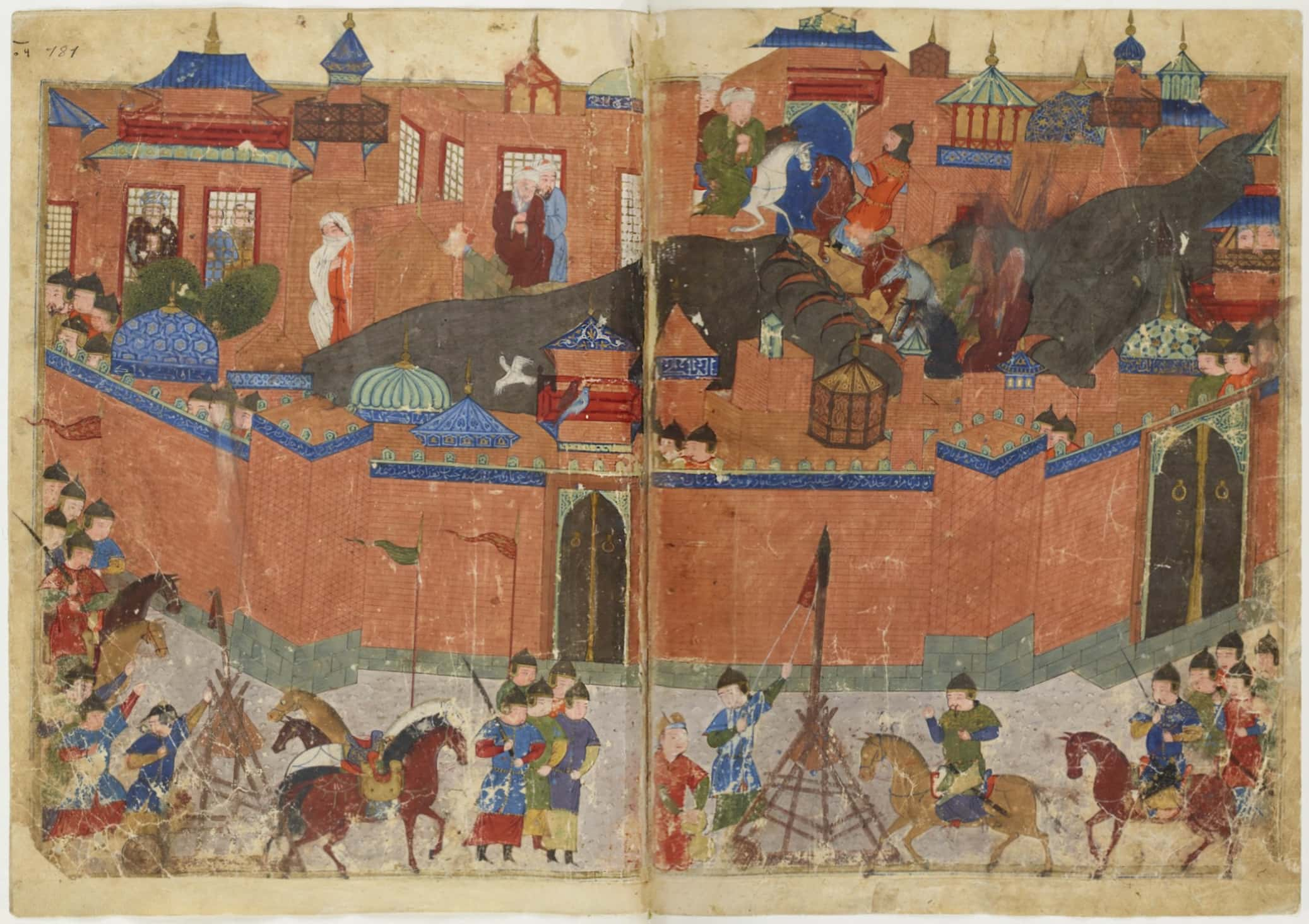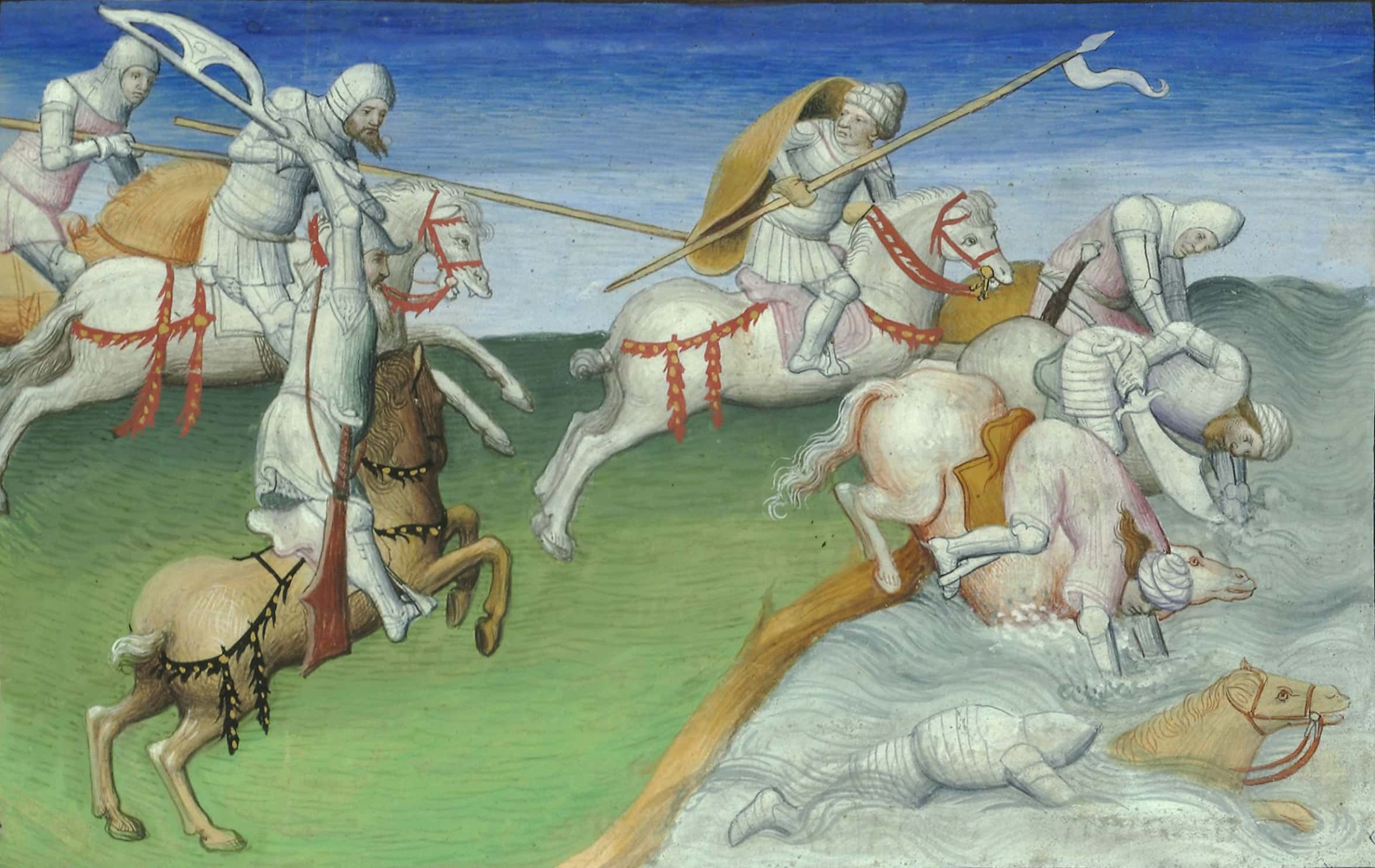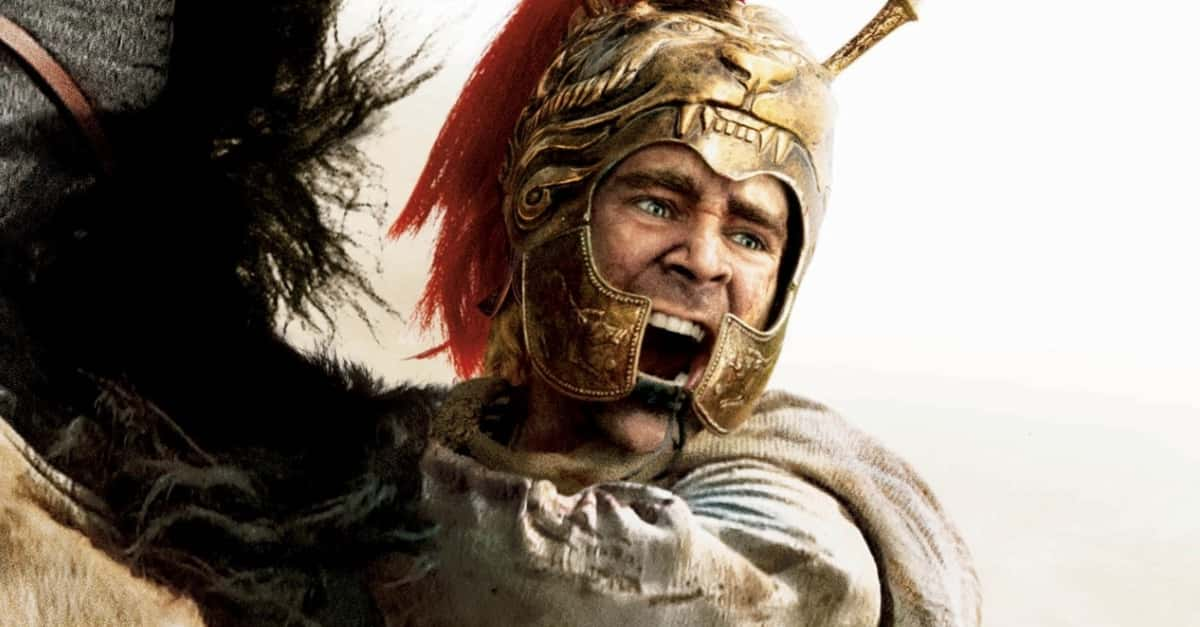"Illustrious acts high raptures do infuse/And every conqueror creates a muse."—Edmund Waller.
There have been many people who have sought world domination, but only a few who actually got anywhere with that type of ambition. Whether through fear or devotion, armies of people followed their orders to wage a bloody conquest against anyone who opposed them. Call them monsters or heroes, but regardless of what they were, these conquerors changed history in important ways; some for the best, others for worse. Their accomplishments are the stuff of legends. Here are 42 powerful facts about history’s fiercest world conquerors.
42. The Sheep That Cost Me An Arm And A Leg
Before the time where the mention of his name spread fear to millions of people, the Islamic Mongol conqueror known as Tamerlane was merely a young boy named Timur who thought he could get away with stealing a sheep from a watchful shepherd. Proving the young thief wrong (presumably, before he could belt out that song from Aladdin, “One Jump Ahead”), the shepherd struck Timur with two arrows. One pierced his leg and the other hit his hand, severing two fingers. The injuries gave the boy a new nickname; Timur the Lame. This is where the name “Tamerlane” originated.
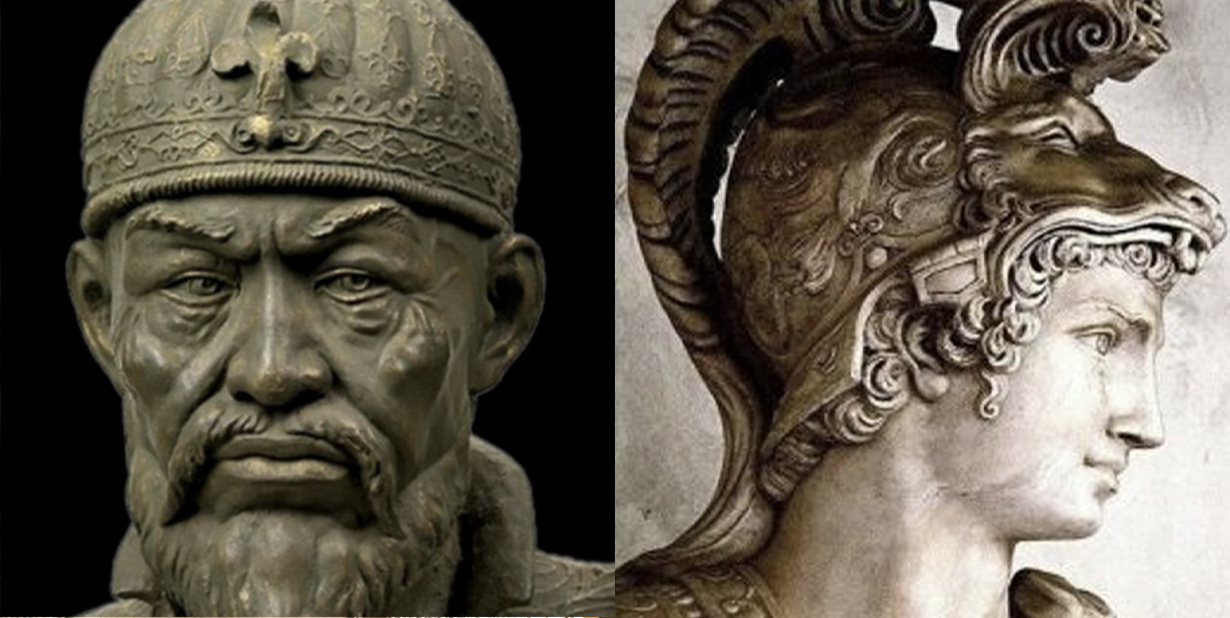
41. Patriotism vs. Practicality
By 192 BC, the Romans had triumphed in the Second Punic Battle against Carthage, driving Hannibal into exile. However, it had been a close call, which had inspired Rome’s other rivals to try their luck. One such man was Antiochus III (also known as Antiochus the Great) of the Seleucid Empire. He invaded Greece with a small force, convinced that they would support him, a descendant of one of Alexander the Great’s officers, over the more foreign Romans. In that, he was mistaken, as only the Aetolians joined him, while the others either joined the Roman side or stayed neutral. Guess that Antiochus the Great wasn’t as great at reading a room as he thought.
40. History Repeats Itself
In 191 BC, Antiochus was threatened by a Greco-Roman army that outnumbered him two to one. He brought his army of around 13,000 to the pass of Thermopylae, hoping to use it like the Greeks had used it against the Persians years before. By then, of course, everyone knew about the ‘secret’ pass which the Persians had used to surround the Greeks, so Antiochus made sure to guard it while his main force of spears fought off the Roman legions. However, the Romans sent their own forces to take the trail, driving back the Greeks due to the uneven ground being unfavorable to the phalanx formation, while the Roman maniple unit was more flexible and adaptable to the surroundings. Antiochus was driven back while the main part of his army was out-maneuvered, surrounded, and massacred.
39. He Must Have Preferred Dogs
The Sikh Empire of the 19th century owed a lot to Hari Singh Nalwa, the commander-in-chief of their armies. However, his career almost ended before it began when Nalwa was hurt by a tiger while part of a hunting party in 1804. His horse was hurt by the tiger and his friends tried to step in and save Nalwa. Nalwa, however, told them to back off and ended the tiger with his bare hands, supposedly tearing it apart by starting at its mouth! After that, he was given the nickname Baagh Maar, which appropriately means “Tiger-Killer".
38. Did He Also have to Call Himself Reek?
The Assyrians were one of the earliest warlike conquerors in human history, and one of their fiercest kings was Ashurbanipal. He was well known for his barbarism towards any enemies that tried to fight the Assyrians, such as when he defeated an Arab king, took him prisoner, and made him live in a dog kennel. To make it extra freaky, the former king was chained to the kennel by his freaking jaw!
37. Gracious in Victory?
Ashurbanipal took issue with the nation of Elam attacking Assyrian territory, and he struck back hard. Elam’s King Teumman fought back, but when his Elamite forces were defeated at the Ulaya river, he took his own life to avoid capture. Ashurbanipal supposedly took Teumman’s head and showed it to the Elamite ambassadors in Niniveh. One of them was said to have torn his beard at the sight, while another proceeded to take his own life as well. Teumman’s head became a decoration in Niniveh’s harbor, while the story of his passing and humiliation were frequently portrayed in Ashurbanipal’s palace.
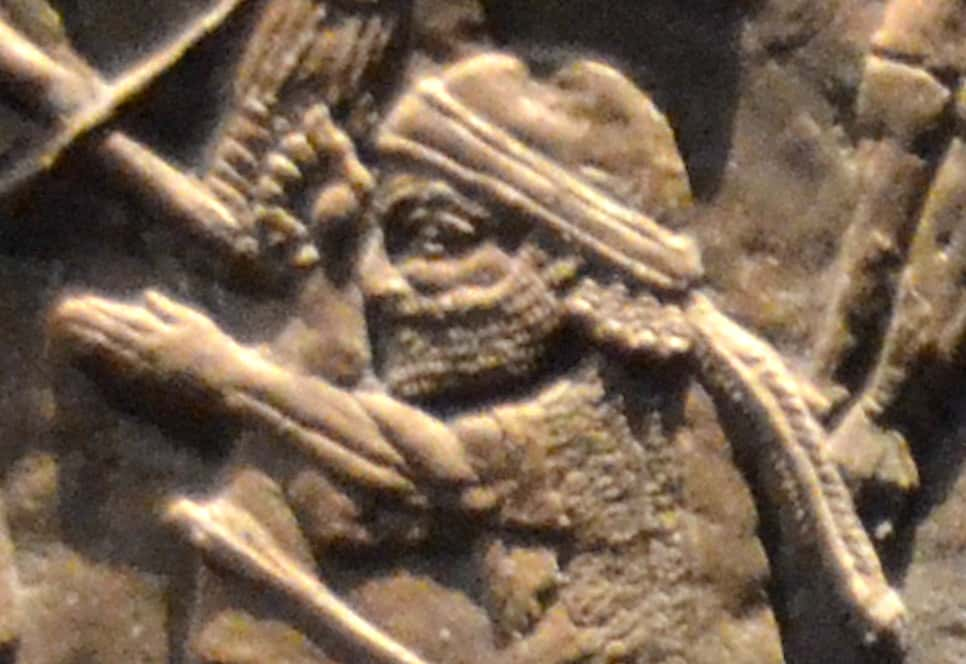 Wikipedia
Wikipedia
36. Love of My Life
Cyrus the Great was the founder of the Persian Empire, the largest empire the world had seen in his lifetime, but he wasn’t afraid to show his soft side. He was married to a woman named Cassandane, and their devotion to each other was well-documented. Before she passed, Cassandane was said to have remarked that it was crueler for her to be separated from Cyrus than from life itself. For his part, Cyrus instigated a public mourning throughout his kingdom, sharing in his own grief. According to records, Babylon spent almost a week in mourning for the fallen Cassandane. Now if only someone would stop cutting onions around here…
35. Respect Your Predecessors
One student of Cyrus the Great was a young Macedonian prince named Alexander, who would go on to not only take Cyrus’ epitaph, but also his empire. However, Alexander held Cyrus in such a high regard that when he heard that the former king’s tomb had been plundered during a period of lawlessness, he furiously prosecuted the supposed protectors of Cyrus’ tomb to find out who was responsible. Ironically, though, this was six years after Alexander and his army had looted and burned down Cyrus’ city of Persepolis, either in an act of vengeance for the Greeks or in a drunken revelry which left everyone awkwardly apologizing while hungover.
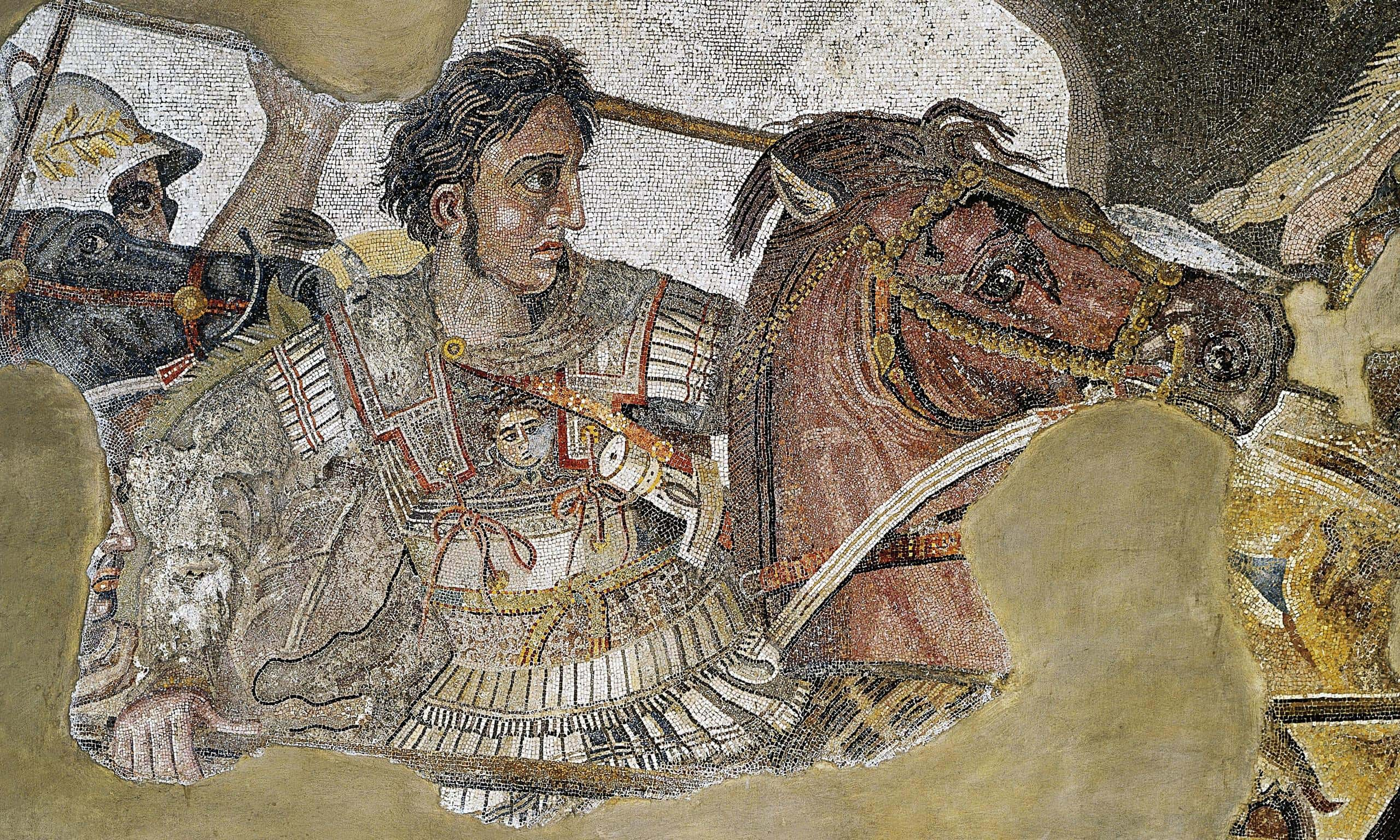 Wikipedia
Wikipedia
34. Overreaching
After Alexander the Great’s passed, his former friend and general Perdiccas took control of the army and saw to it that Alexander’s infant son and mentally disabled half-brother became joint rulers of the vast Macedonian empire. However, Perdiccas’ own ambitions alienated him from the rest of Alexander’s former generals, especially when he called off an engagement with Antipater’s daughter when Alexander’s mother offered Perdiccas a marriage with Alexander’s sister. This meant that Perdiccas would have married into Alex’s family and become a successor to his kingdom.

Sign up to our newsletter.
History’s most fascinating stories and darkest secrets, delivered to your inbox daily. Making distraction rewarding since 2017.
33. Surrounded by Enemies
Snubbing Antipater wasn’t a good idea, however, especially for his hated rival, Olympias. Antipater formed a deal with Craterus, one of Alexander’s most trusted former generals, against Perdiccas. Another enemy of Perdiccas’ was Ptolemy, one of Alexander’s closest friends. Unlike the more ambitious of Alexander’s former associates, Ptolemy saw no point in trying to take the whole empire and was satisfied with taking Egypt for himself.
32. Body Snatcher
While Perdiccas was securing the empire for himself in 321 BC, Perdiccas ordered that Alexander’s body be sent from Babylon back to Macedon for burial in the city where he’d first been declared king. However, Alexander’s prestige was so respected that even possession of his remains added great legitimacy to someone’s rule. So, Ptolemy took charge of the body when it reached Damascus and redirected it to be buried in the Egyptian city of Alexandria. This action would prove to be Perdiccas’ undoing.
31. Feed Him to the Crocodiles
Perdiccas immediately went to invade Egypt to repossess Alexander’s body, but something got in the way of his attack on Ptolemy. That particular something was the vast Nile river, and Perdiccas was stuck on one side of it. It was at that point where Perdiccas had finally made too many enemies, and he was ended by three of his own officers. To add insult to injury, one of his killers was Seleucus, would go on to take all of Alexander’s Asian territory and form the Seleucid Empire.
30. Excuse Me, I’m Up Here!
Much has been said about Napoleon Bonaparte and his surprising height—or lack thereof—despite being a great conquering hero. However, this was partly due to a difference in British and French measurement systems. The physician who measured Napoleon for his coffin reported that he stood 5’2” tall, but converting that to English measurements, he was actually 5’6” tall, an average height for the time.
29. Written by the Victors
Of course, we must also credit the legend of Napoleon’s height to historical propaganda. British cartoonists demonized Napoleon in the newspapers during the Napoleonic Wars and failing to translate the French measurement of 5’2” would have just added to the comedic fuel. Ironically, Napoleon was two or three inches taller than the British hero, Admiral Horatio Nelson, and nobody ever mocks Nelson for being short!
28. Alexander’s Asian Invasion
While Alexander the Great’s father, Philip of Macedon, favored diplomacy as a means of getting what he wanted, Alexander was far more direct in his approach. When he crossed the Hellespont in 334 BC with his army and neared the shores of Asia Minor, Alexander famously threw a spear from the ship and struck the coastline with it, declaring that he accepted Asia as a gift from the gods. Sadly, there’s no record of the gods shouting, “You’re welcome!” in response.
27. I’ll Retire When I’m Gone!
With the end of Perdiccas in 321 BC, the rest of Alexander the Great’s former generals more openly sought to carve up the Macedonian empire, each one determined to get the piece they wanted. However, one man who wanted to put the pieces back together was Antigonus, known as the One-Eyed. He was determined to make his own dynasty, and this put him at odds with such people as Ptolemy in Egypt, Cassander in Greece and Macedonia, and Seleucus in the east. Antigonus was eventually defeated at Ipsus in 301 BC. It was his only recorded defeat, and he was recorded as being a whopping 81 years old. The old timer was even participating in the battle and was ended by a javelin!
 Alexander the Greta, 2004, Intermedia, Intermedia Films
Alexander the Greta, 2004, Intermedia, Intermedia Films
26. We’ve Gone Too Far
The Roman Empire reached its largest size under Emperor Trajan, who ruled from 98 to 117 AD. He embarked on several army campaigns which led to the conquests of Dacia, Nabataea, and areas of Parthia. The empire became so big that his successor, Hadrian, actually decided that it was too unwieldy for the Romans and proceeded to give up certain territories newly won by Trajan. This must have been quite the mixed response to those that Trajan had just conquered!
25. Worthy Opponent
Julius Caesar’s conquest of Gaul took a long time, as the Gallic tribes were powerful and certainly a match for the Romans at the time. The two advantages that the Romans had, however, were the divisions amongst the tribes, and the fact that Caesar was a army genius. However, one man threatened to take the victory for Gaul nonetheless. In 52 BC, Vercingetorix sought to unite the Gauls against the Romans, even driving Caesar back for a time. However, Vercingetorix’s efforts were too little too late, and the tribes never fully united under him.
24. That’s What I Call a Siege!
Vercingetorix’s rebellion against the Romans was decided once and for all when the Gallic leader withdrew into the large town of Alesia with army of nearly 80,000. Caesar besieged him with nearly the same number of army but was daunted by how well-defended Alesia was, being on a hill with two rivers on two different sides. Caesar decided to play the long game, having his army build a blockade of forts and walls around the entire town. The siege line was said to be eleven Roman miles long in total. When Vercingetorix sent raids to disrupt the building, Caesar placed his army in front of the construction to prevent the Gauls from breaking out.
23. Caesar’s Encircled Us… and Himself!
Trapped in Alesia, Vercingetorix called for reinforcements to drive Julius Caesar and his Roman legions away from the siege lines. More than 200,000 Gauls were said to have answered his summons. However, Caesar got wind of this and made a drastic decision. He ordered a second ring of fortifications built to protect the first ring, keeping the separate Gallic forces from uniting and keeping Vercingetorix trapped. With food supplies dwindling, Vercingetorix eventually surrendered,
22. Stay in School!
Tamerlane is well known for stomping down any type of resistance against him and his Tatar forces. However, there was a bizarre method to his madness. Like Genghis Khan, Tamerlane was known to spare the artisans and the educated from the worst of his slaughter, as he wanted to actually keep hold of the lands he conquered, and that meant having order restored after he was done ending anyone opposed to him. It was probably one of the few times in history that parents encouraged their children to study the arts.
21. Nobody Tells Me What to Do!
Most conquerors justify their actions by acting in the name of their country’s glory and benefit. However, some have to go above the law of their own country to make such conquests. Spanish conquistador Hernan Cortes heard about the wealth of the area now known as Mexico and urged Hispaniola Governor Velasquez for a command to get some of that wealth for Spain. However, Velazquez got cold feet and called off Cortes’s charge. Cortes ignored the counter-command and set off with his expedition, changing history just because he felt like it.
 Wikipedia
Wikipedia
20. Family Feud
As his empire got bigger and bigger, Genghis Khan was also mindful that he had to figure out who got control of it after he was gone. What made it more difficult was that his sons didn’t always get along, especially his eldest, Jochi, and his second son, Chagatai. Khan decided to split the empire into khanates amongst his sons but also choose a successor to become the Great Khan. He chose his third son, Ogedei, to become the Great Khan, as he was sure that Ogedei’s brothers would have the least reason to rebel against him.
19. Mid-Life Conversion
If you looked at the early part of Ashoka the Great’s reign as emperor of the Maurya Dynasty in India, you would find it stained with blood. Ashoka warred with the state of Kalinga, eventually conquering it after more than 100,000 army were ended and 150,000 people were taken. Surprisingly, though, Ashoka turned his life around after he allegedly looked at all the destruction that his battle had caused and realized he needed to check himself. Ashoka converted to Buddhism and became one of its strongest patrons. His rule became far more peaceful, and he never embarked on any huge massacres again. Good to know he got it out of his system!
18. Call Me Monsieur Napoleon Jones
Believe it or not, traveling abroad to conquer can actually lead to some surprising discoveries, especially if said conqueror considers himself a scientist. Napoleon brought 150 scientists, scholars, and engineers with him when he invaded Egypt. It was his forces that discovered the famous Rosetta Stone, which allowed humanity to begin to interpret Egyptian hieroglyphics.
17. What Have I Done?!
In 328 BC, Alexander was hosting his generals and friends at a feast in Maracanda, which we now call Samarkand). He used this opportunity to announce several reappointments, specifically that one of his cavalry officers, Cleitus the Black, be given the task of governing the province of Bactria with a force of 15,000 Greek mercenaries. Cleitus took great offense at this, which he saw as a demotion which left him in the middle of Asia far from home without any chance at glory with Alexander. He was also said to have been offended by Alexander’s adoption of Persian customs as he took over their empire. Add some booze into the mix, and Cleitus began openly insulting Alexander at the banquet, which led to a vicious quarrel between the two drunken men. Alexander lost his temper and, wielding a spear, ended Cleitus (who we should note served Alexander’s father and also saved Alexander’s life in battle once). Alexander was said to feel so guilty at what he’d done that he tried to end himself with the same spear that he’d used to end Cleitus!
16. We’re Bloodthirsty, but We’re Not Bigoted!
Interestingly, the Mongol Empire of Genghis Khan wasn’t just founded on bloodshed and destruction. One of the more positive aspects of Khan’s rule was his religious tolerance. Mongol customs dictated that a person’s religion was their own business, and so Khan never hurt anyone based on their beliefs. All he cared about was whether they agreed to let him be dictator or not!
15. Bringing Camels to an Elephant Battle
Tamerlane’s most devastating victory occurred in 1398 when he invaded northern India with his Tatar forces to challenge Sultan Nasir-ud-Din Mahmud Shah Tughluq—quite the mouthful, buddy. When the Sultan and the conqueror faced off, Tughluq must have thought he was at an advantage as he unleashed his elephants, armored in chainmail with poisoned tusks. However, Tamerlane knew just as well as the Sultan that elephants would terrify his cavalry forces, and he’d come up with a solution to that problem. Tamerlane made a line of camels, loaded kindling and hay on their backs, and lit them on fire before sending them screaming at the elephants. Faced with burning camels running at them, the elephants turned tail and panicked along with them, doing great damage to their own side. Tamerlane and his men rode into the panic with his forces, presumably while they all tried not to fall off their horses while laughing at the madness which was happening.
14. Talk About a Sore Winner
Fresh from his victory—not to mention the 100,000 captives he’s said to have executed even before the battle occurred—the bloodthirsty Tamerlane rode to the immensely wealthy city of Delhi and captured it. When the ordinary citizens of Delhi mounted revolts against Tamerlane’s forces, he was only too happy to show them how willing he was to wiped-out his enemies. The damage he did to Delhi was said to be so devastating that it took a century before it recovered.
13. Rome, Meet my Elephants
By 280 BC, the Romans were poised to take over the entire Italian peninsula, including the Greek city-states in the south of Italy. The city of Tarentum reached out for backup, and finally, a king answered their call for help. King Pyrrhus of Epirus was a distant relative of Alexander, and he had the same taste for conquest. Helping Tarentum was an invitation to carve out an empire for himself in Italy, so he landed there with more than 25,000 men and 20 battle elephants. It would be the first time that Rome ever faced elephants in battle—sorry, Hannibal.
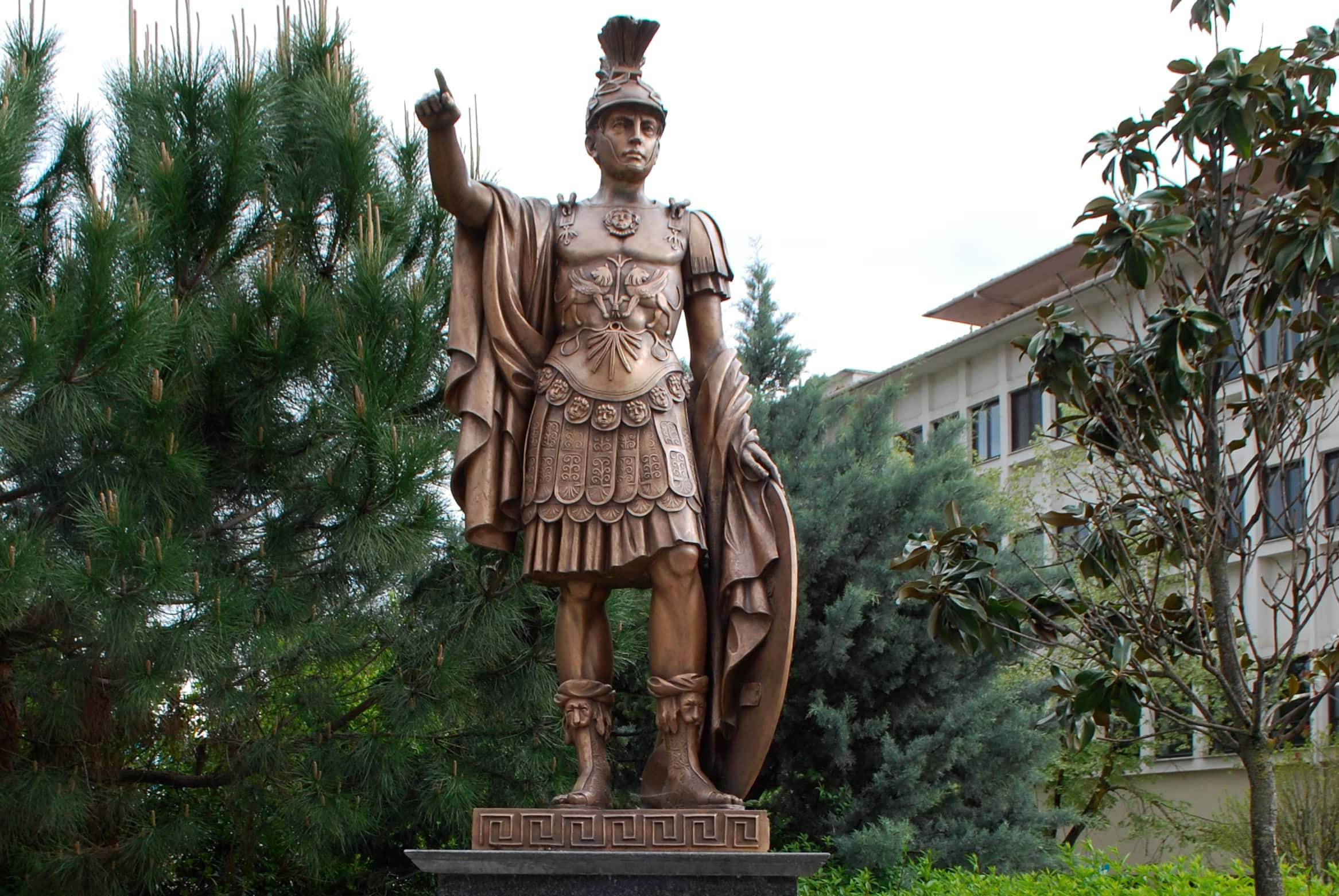
12. Immortalized (But Not How He Hoped)
Pyrrhus was victorious against the Romans at Heraclea in 280 BC and Asculum in 279 BC. However, Pyrrhus lost so many of his best army man and officers in the two battles that he famously remarked: “If we are victorious against Rome one more time, we will be utterly ruined!” His name is still used to describe an accomplishment which costs more than its worth in the phrase "Pyrrhic victory."
11. Full-Time Conqueror, Part-Time Prophet
In 278 BC, Pyrrhus was asked to help the Greeks on Sicily drive out the Carthaginians, who had their own empire along the Mediterranean. While Pyrrhus did have some initial success and was even proclaimed King of Sicily, he was pushed to install a army dictatorship to give himself the supplies and manpower he needed to continue fighting the Carthaginians. The Greeks on Sicily, in a case of great irony, allied with the Carthaginians against Pyrrhus until he hit the old dusty trail back to Italy. According to ancient records, as the Epirote king sailed away from Sicily he quipped “What a wrestling match we are leaving, my friends, for the Carthaginians and the Romans". Pyrrhus proved eerily accurate when the First Punic Battle between those empires was partially fought for control of Sicily.
10.Ended by My Enemy’s Mother
As for King Pyrrhus, he met a rather anti-climactic end for such a well-known conqueror who had triumphed against Rome in battle. After being driven back to Greece and Macedon, Pyrrhus found himself embroiled in their internal struggles. While battling his way through Argos, Pyrrhus was in the thick of the fighting. At one point, while he was duking it out with a common Argive soldier, the soldier’s elderly mother allegedly noticed her son being picked on by the enemy king and flung debris at him. Pyrrhus was knocked off his horse, and was either paralyzed or ended by the fall. Either way, though, his body was beheaded before he could make any “your mother” jokes in response.
 Wikipedia
Wikipedia
9. When Things Go Wrong
When the defeated Napoleon first heard that he would be exiled to the island of Elba, his response was to attempt self-immolation with a poisonous pill. However, the problem was that he’d been carrying that pill with him since his disastrous invasion of Russia two years before, and the potency of the poison had expired slightly. So, while it did make him very sick, he managed to survive to fight another day. Unfortunately for him, that day was at Waterloo. Oops!
8. A Highly Developed Sense of Order
The Persian Empire owed a huge debt to Cyrus the Great, who conquered several other empires to form his own, which was the largest empire that had ever existed at that point in human history. This kind of empire needed proper management, though, so Cyrus established the satrapy system. Each province in the empire had a satrap, or governor, to manage it and answer to Cyrus himself. Each satrap had a general for army matters and a state secretary for official records. This system was so useful that when Alexander the Great conquered the Persian Empire years later, he kept the satrapy system going rather than bother to replace it with something else!
7. Bloodshed by Mongols
It’s safe to say that Genghis Khan is responsible for more deaths than almost any other person in human history, and this includes one of the worst single massacres in all that history. When the Mongols attack the wealthy city of Urgench, it was a more difficult battle than was first expected. Khan’s forces had difficulty adapting the Mongolian style of fighting to cramped city streets as they battled Urgench’s defenders inch by inch. Despite the brave resistance, the city fell anyway, and Khan was unsurprisingly miffed at how hard he’d had to work for his victory. Historical records say that while the artisans of the city were sent back to Mongolia, and the women and children became slaves, Khan ordered each of his 50,000 Mongols to end 21 people. Assuming that they all met his quota—and really, when Genghis Khan told you to do something, you did it—it resulted in a bloodshed of 1.2 million people.
 Shutterstock
Shutterstock
6. A Quota’s a Quota
Khan wasn’t the only one who had high expectations for each of his army man. When Tamerlane captured and destroyed Baghdad in 1401, he ordered that each of his army man needed to bring him at least two severed heads. The army allegedly had to go to extreme measures to fill this allocation. They resorted to beheading prisoners that had been taken before the assault on Baghdad, and some man even beheaded their own wives out of fear of being short-handed. If that doesn’t explain how terrifying Tamerlane was, we have no idea what will.
5. Disturbing Joke
The Roman Emperor Caligula had a malevolent sense of humor. Once at a dinner party, he reportedly burst into raucous laughter. When asked to explain the reason for his mirth, he replied, “I’ve just thought that I’ve only to give the word and you’ll all have your throats cut". Hilarious, right?!
4. Rebound Remorse
A year after his first wife had passed, Ivan the Terrible married Maria Temryukovna, who was only seventeen and perceived as illiterate. Ivan, however, was stricken by Maria's great beauty. The marriage was one of his least successful. Not only did their only child passed young—continuing a grisly trend when it came to Ivan’s offspring—but Maria was unpopular and unable to adjust to life in Moscow. Upon her end in 1568, rumors abounded that Ivan had poisoned her, though it’s recorded that he went on a witch hunt to find out the true cause of her passing, so the truth will never be known.
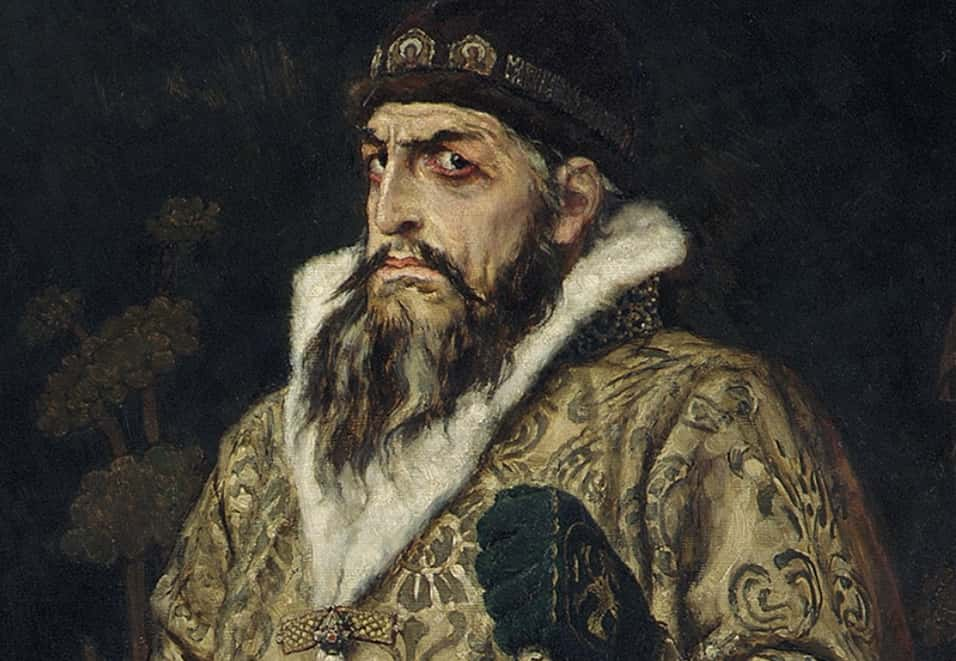 Wikipedia
Wikipedia
3. That Was Us?!
In 1347, a city in Crimea owned by the Genoese named Kaffa was under siege by the Mongolian Golden Horde, one of the world's most fearsome conquering groups. During the siege, several of the Horde’s forces began dying of a foul disease. Seeking to use this as an advantage, the Mongols began catapulting the diseased bodies of the ended into the city. Many scholars believe that this was how the Black De*th first came to Europe, as the Genoese brought the disease with them when they fled Kaffa and headed west for havens such as Sicily. This means that the Mongols, between the Black De*th and their regular conquering, have maybe the highest bloody count of any civilization in world history.
2. What are the Odds??
On June 19, 1941, a small group of archaeologists from the Soviet Union exhumed a body from a newly discovered tomb in Samarkand. The body was revealed to be none other than Tamerlane, but the discovery may have been a mistake. Allegedly, a message was inscribed on the legendary conqueror’s tomb. It stated, “When I rise from the other side, the world shall tremble,” while other reports state that a second, more direct, message stated, “Whomsoever opens my tomb shall unleash an invader more terrible than I". Three days later, the Soviet Union was hit by Operation Barbarossa, the largest army invasion that has ever been undertaken.
1. Just a Little Indigestion
After surviving countless battles and execution attempts, William the Conqueror was gone after an accident with his rearing horse that ruptured his intestines. An infection set in and he was gone several weeks later, but that wasn't even the worst of his fate. When priests tried to stuff the corpulent king into his coffin for his funeral, they pushed down on his abdomen, causing his intestines to explode everywhere. Reportedly, his loyal mourning subjects ran as fast as they could for the nearest exit when they caught a whiff of the putrid odor emanating from their ruler.
Sources: 1, 2, 3, 4, 5, 6, 7, 8, 9, 10, 11, 12, 13, 14, 15, 16, 17, 18, 19, 20, 21, 22, 23, 24, 25, 26

